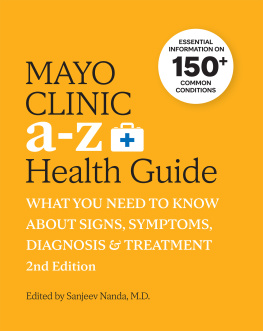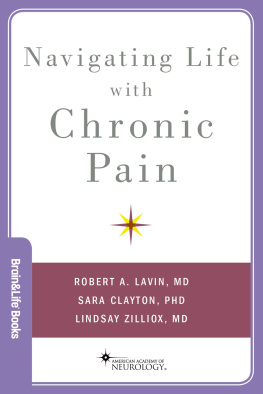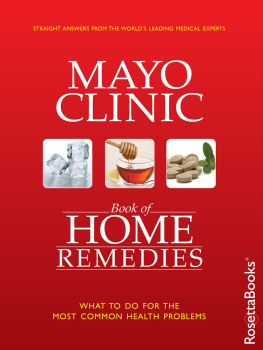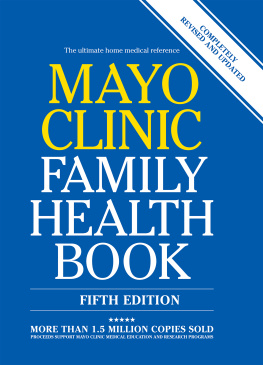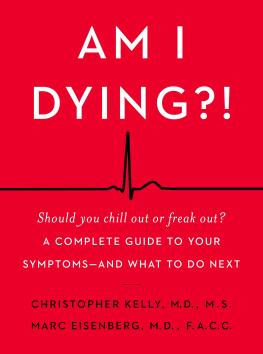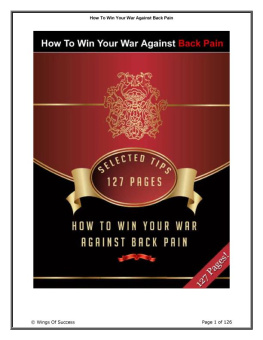ADVISORY BOARD REVIEWERS
Robert Cohen, DMD
Clinical Associate Professor and Practice Coordinator, Department of General Dentistry, Tufts University School of Dental Medicine
Leonard G. Gomella, MD
The Bernard W. Godwin Professor of Prostate Cancer; Chairman, Department of Urology and Associate Director of Clinical Affairs, Jefferson Kimmel Cancer Center, Thomas Jefferson University
Sidney N. Klaus, MD
Professor of Medicine, Department of Dermatology, Dartmouth Medical School; Chief of Dermatology, White River Junction, Vermont VA Medical Center
Melvin I. Roat, MD
Clinical Associate Professor, Wills Eye Institute, Department of Ophthalmology, Jefferson Medical College, Thomas Jefferson University
Robert Ruben, MD
Distinguished University Professor, Department of OtorhinolaryngologyHead & Neck Surgery, Albert Einstein College of Medicine and Montefiore Medical Center
Stewart Shankel, MD
Clinical Professor of Medicine and Director of Clinical Instruction, University of California, Riverside
ABDOMINAL PAIN, ACUTE
Abdominal pain is common and often minor. Severe abdominal pain that comes on quickly, however, almost always indicates a significant problem. The pain may be the only sign of the need for surgery and must be attended to swiftly. Abdominal pain is of particular concern in people who are very young or very old and those who have human immunodeficiency virus (HIV) infection or are taking drugs that suppress the immune system. Older adults may have less abdominal pain than younger adults with a similar disorder, and, even if the condition is serious, the pain may develop more gradually. Abdominal pain also affects children, including newborns and infantswho cannot communicate the reason for their distress.
TYPES OF ABDOMINAL PAIN
There are different types of abdominal pain depending on the structures involved.
Visceral pain comes from the organs within the abdominal cavity (which are called the viscera). The visceras nerves do not respond to cutting, tearing, or inflammation. Instead, the nerves respond to the organ being stretched (as when the intestine is expanded by gas) or surrounding muscles contract. Visceral pain is typically vague, dull, and nauseating. It is hard to pinpoint. Upper abdominal pain results from disorders in organs such as the stomach, duodenum, liver, and pancreas. Midabdominal pain (near the navel) results from disorders of structures such as the small intestine, upper part of the colon, and appendix. Lower abdominal pain results from disorders of the lower part of the colon and organs in the genitourinary tract.
Somatic pain comes from the membrane (peritoneum) that lines the abdominal cavity (peritoneal cavity). Unlike nerves in the visceral organs, nerves in the peritoneum respond to cutting and irritation (such as from blood, infection, chemicals, or inflammation). Somatic pain is sharp and fairly easy to pinpoint.
Referred pain is pain perceived distant from its source (see art box on ). Examples of referred pain are groin pain caused by kidney stones and shoulder pain caused by blood or infection irritating the diaphragm.
PERITONITIS
Peritonitis is inflammation of the peritoneal cavity. It is very painful and almost always signals a very serious or life-threatening disorder. It can result from any abdominal problem in which the organs are inflamed or infected. Common examples include appendicitis, diverticulitis, and pancreatitis. Also, blood and body fluids (such as intestinal contents or urine) are very irritating when they leak into the peritoneal cavity and can cause peritonitis. Disorders that cause blood and body fluids to leak include spontaneous organ rupture (such as a perforated intestine or ruptured ectopic pregnancy) and severe abdominal injury.
Once peritonitis has been present for a number of hours, the inflammation causes fluid to leak into the abdominal cavity. The person may then develop dehydration and go into shock. Inflammatory substances released into the bloodstream may affect various organs, causing severe lung inflammation, kidney failure, liver failure, and other problems. Without treatment, people may die.
CAUSES
Pain can arise from any of many causes, including infection, inflammation, ulcers, perforation or rupture of organs, muscle contractions that are uncoordinated or blocked by an obstruction, and blockage of blood flow to organs.
Immediately life-threatening disorders, which require rapid diagnosis and surgery, include
Ruptured abdominal aortic aneurysm
Perforated stomach or intestine
Blockage of blood flow to the intestine (mesenteric ischemia)
Ruptured ectopic pregnancy
Serious disorders that are nearly as urgent include
Intestinal obstruction
Appendicitis
Sudden (acute) inflammation of the pancreas (pancreatitis)
Sometimes, disorders outside the abdomen cause abdominal pain. Examples include heart attack, pneumonia, and twisting of a testis (testicular torsion). Less common problems outside the abdomen that cause abdominal pain include diabetic ketoacidosis, porphyria, sickle cell disease, and certain bites and poisons (such as a black widow spider bite, heavy metal or methanol poisoning, and some scorpion stings).
ABDOMINAL PAIN IN NEWBORNS, INFANTS, AND YOUNG CHILDREN |
Cause of Pain | Description | Comments |
Meconium peritonitis | Inflammation and sometimes infection of the abdominal cavity and its lining (peritonitis) caused by a perforation in the intestine and leakage of meconium (the dark green fecal material that is produced in the intestines before birth) | Occurs while infants are still in the womb or shortly after birth |
Hypertrophic pyloric stenosis | A blockage at the stomach outlet (duodenum) | Forceful (projectile) vomiting occurs after feedings Usually begins between birth and 4 months of age |
Esophageal webs | Thin membranes that grow across the inside of the upper one third of the esophagus from its lining (mucosa) | Solids are difficult to swallow |
Volvulus | Twisting of a loop of the intestines | Causes intestinal obstruction and cuts off the blood supply to intestines Commonly, vomiting, diarrhea, abdominal swelling, and episodic and excessive crying (colic) |
Imperforate anus (anal atresia) | Narrowing or blockage of the anal opening | Normally detected by doctors when infants are examined after birth and usually requires immediate surgery |
Intussusception | The condensing and overlapping (telescoping) of one portion of the intestine into another | Causes intestinal obstruction and cuts off the blood supply to the intestine Causes sudden pain, vomiting, bloody stools, and fever Typically affects children between the ages of 6 months and 2 years |
Intestinal obstruction | A blockage that completely stops or seriously impairs the passage of intestinal contents | Commonly caused by a birth defect, meconium, or volvulus in newborns and infants Various symptoms depending on the type of obstruction but may include cramping pain in the abdomen, bloating, disinterest in eating, vomiting, severe constipation, diarrhea, and fever |
Abdominal pain in newborns, infants, and young children has numerous causes not encountered in adults (see Table, above).
EVALUATION
The following information can help people decide when a doctors evaluation is needed and help them know what to expect during the evaluation.


